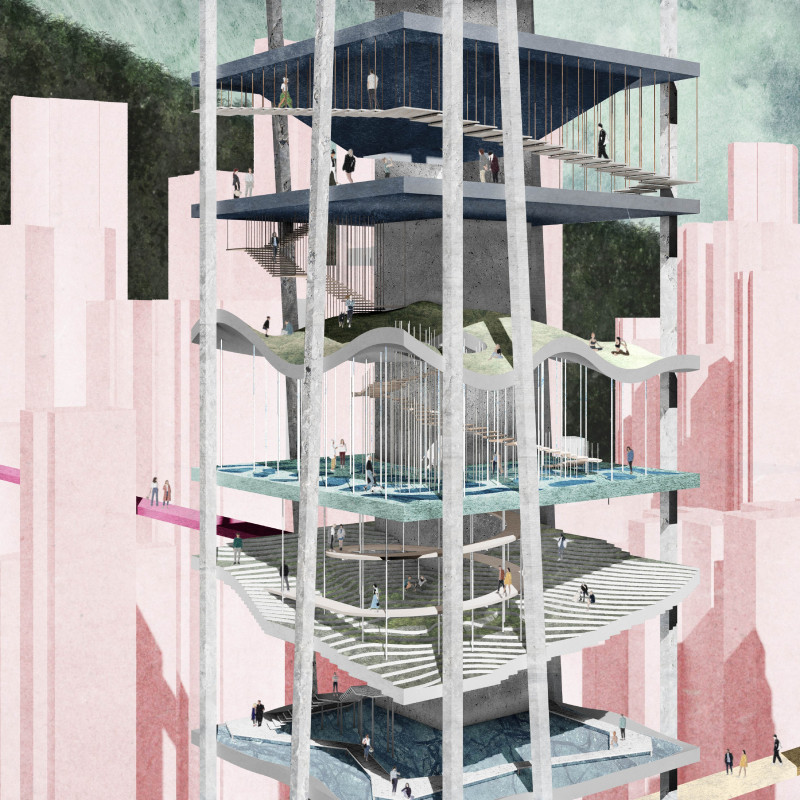5 key facts about this project
The design project located in Hong Kong presents a new way to think about public space by utilizing a vertical structure. It addresses the current challenges of urban density caused by increasing populations in cities. By changing traditional two-dimensional public areas into a three-dimensional format, the concept optimizes the use of vertical space while ensuring accessibility and interaction are prioritized.
Design Concept
Stacked public programs are connected by skybridges, creating pathways that run through multiple levels. The layout consists of several towers equipped with elevated walkways and highlines that facilitate pedestrian movement throughout the urban area. By focusing on social interaction and efficient use of space, the design encourages an active and engaging urban experience.
Public Amenities
Incorporating a range of public amenities is vital to the proposal, as these features enhance community connectivity. Spaces such as observation decks, urban gardens, recreation terraces, and sports facilities contribute to a varied urban landscape. Each amenity serves its own purpose while also promoting interaction among users. The careful arrangement of these amenities throughout the towers allows both private and shared activities, adding vitality to the urban environment.
Movement and Circulation
The design pays careful attention to how people move within these vertical buildings. It offers three distinct types of movement: rapid ascents using elevators, changes in elevation with stairs, and leisurely strolls along ramps. This organized approach to circulation promotes easy flow and improves the user experience, allowing residents and visitors to navigate the space comfortably and efficiently.
Material Considerations
While specific materials are not detailed in the initial proposal, the focus on sustainability suggests that the design may incorporate eco-friendly and efficient construction materials. These materials are likely chosen for their durability and environmental performance, ensuring the design can withstand the demands of urban life while contributing to the overall aesthetic.
The project reshapes the understanding of urban public space, providing areas for community interaction and engagement through thoughtfully designed features and amenities.





















































